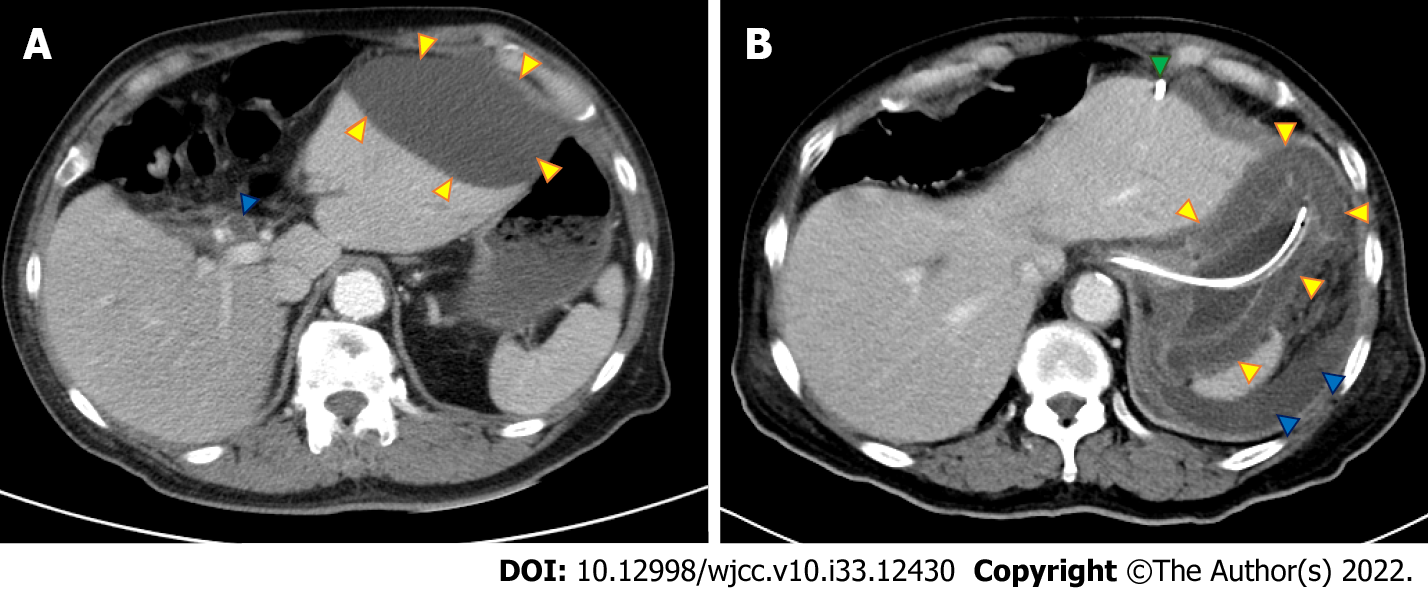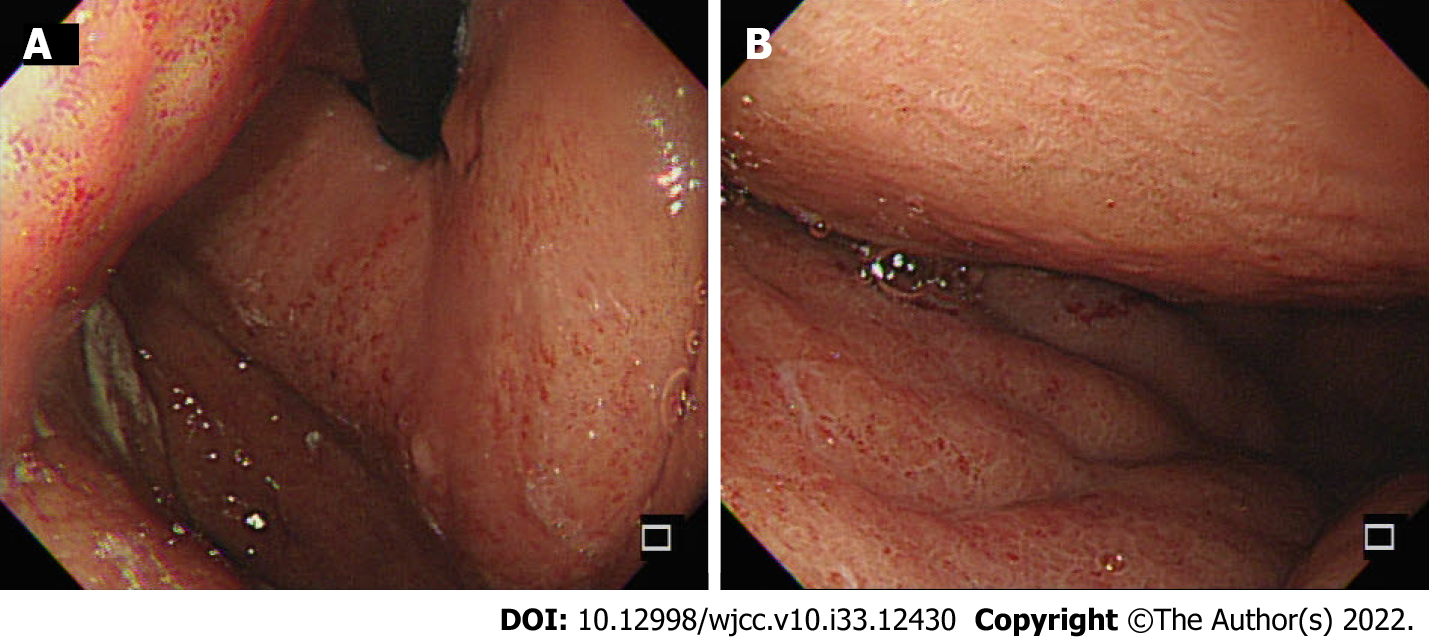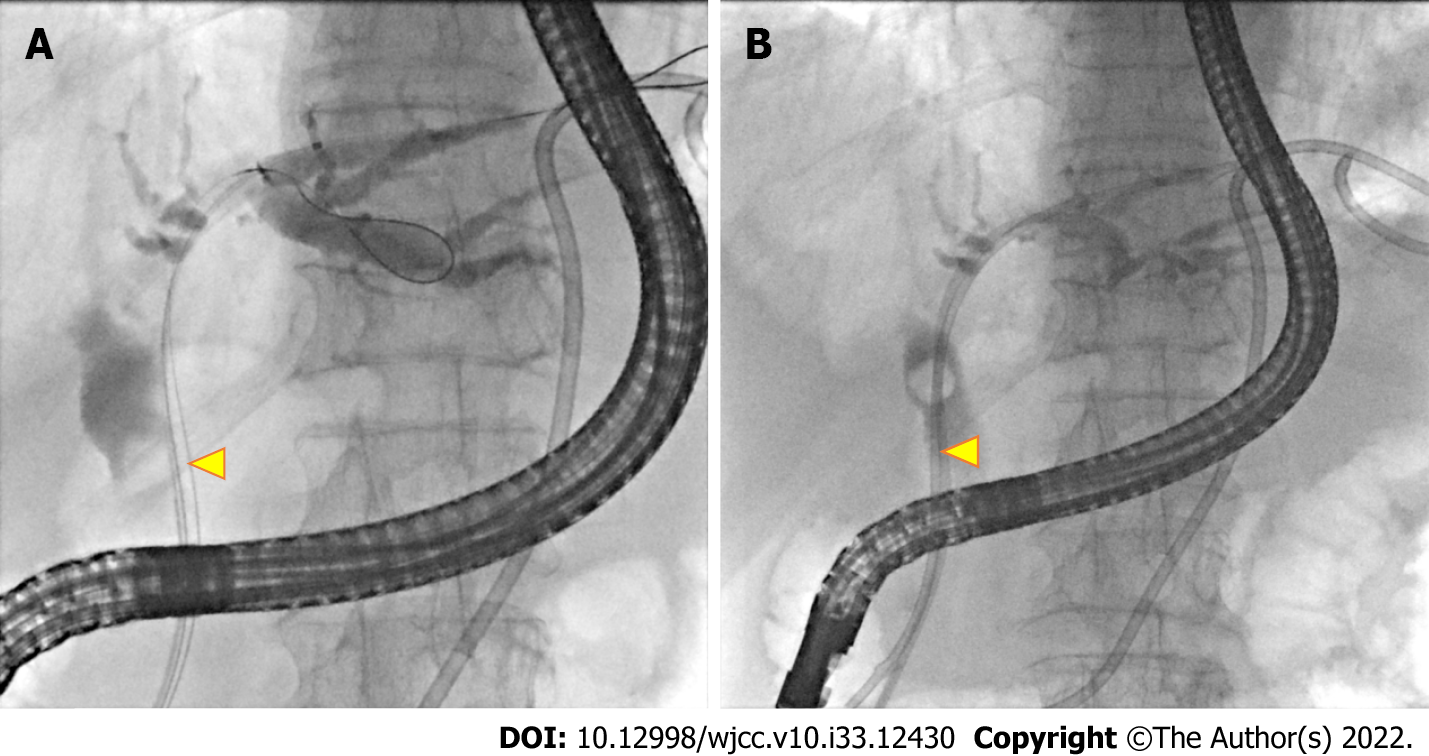Copyright
©The Author(s) 2022.
World J Clin Cases. Nov 26, 2022; 10(33): 12430-12439
Published online Nov 26, 2022. doi: 10.12998/wjcc.v10.i33.12430
Published online Nov 26, 2022. doi: 10.12998/wjcc.v10.i33.12430
Figure 1 Abdominal computed tomography.
A: Initial abdominal computed tomography (CT) showed a dilated common bile duct (blue arrow) and left subphrenic abscess (yellow arrows); B: Repeat abdominal CT after biloma drainage (green arrow) showed bile leakage (blue arrows) and enlarged wall of the stomach (yellow arrows).
Figure 2 Esophagogastroduodenoscopy.
Esophagogastroduodenoscopy showed an edematous, hyperemic gastric mucosa with poor distensibility in the body of the stomach and the fundus of the stomach. A: The body of the stomach; B: The fundus of the stomach.
Figure 3 Endoscopic retrograde cholangiopancreatography.
A: Dilated common bile duct (CBD) with one filling defect about 10 mm in size (yellow arrow); B: Endoscopic retrograde biliary drainage (yellow arrow) was performed for CBD stone-induced cholangitis.
Figure 4 Hemoxylin and eosin staining of gastric mucosal biopsy.
A: At × 10 magnification, gastric submucosal and mucosal infiltration was observed (yellow circle); B: At × 20 magnification, clusters of lymphocytes, neutrophils, and plasma cells infiltrated into the submucosa.
Figure 5 Follow-up esophagogastroduodenoscopy.
A normal gastric mucosa with improved distensibility of the stomach was observed in the body of the stomach and the fundus of the stomach. A: The body of the stomach; B: The fundus of the stomach.
- Citation: Yang KC, Kuo HY, Kang JW. Phlegmonous gastritis after biloma drainage: A case report and review of the literature. World J Clin Cases 2022; 10(33): 12430-12439
- URL: https://www.wjgnet.com/2307-8960/full/v10/i33/12430.htm
- DOI: https://dx.doi.org/10.12998/wjcc.v10.i33.12430













